For graphic designers, artists, and architects, finding a good smartphone isn’t just about a cool camera. It’s about getting the colors right, having a good-sized screen, and apps that work well for drawing and designing.
As a designer, I’ve had my fair share of smartphones with colors looking off or wavy lines. Most smartphone reviews talk about games or taking photos, but what about those who need it for design? That’s what I’m here for. Dive in as I list the top smartphones perfect for those who love to design and create. Let’s find that perfect fit.

On a side note, if you are a designer, make sure to check out my tailored list of graphic design essentials, laptops, monitors, and tablets.
Quick List: Top Rated Smartphones in 2024
Here is a quick glance at the best smartphones of 2024:
- iPhone 15 Pro — Best Overall (Editor’s Choice)
- Samsung Galaxy S23 Ultra — Best Phone for Graphic Designers
- Samsung Galaxy Z Fold 5 — Best Phone for Artists
- Google Pixel 7 — Best Value Smartphone
- Apple iPhone 14 — Best Phone for Interior Designers
- OnePlus 11 — Best Phone for Creatives
- Xiaomi 13 Pro — Best Phone for Digital Marketing
- Samsung Galaxy A54 5G — Best Budget Phone
- Asus ROG Phone 7 — Best Phone for Animation
- Motorola Razr — Best Flip Smartphone
Which Smartphone is the Best in 2024?
Having tried and tested various smartphones, I’ve found the iPhone 15 Pro Max to be the best smartphone so far in 2024. It’s powerful, fast, immersive, versatile, and overall worth every penny of its premium price.
The iPhone 15 Pro Max is the top choice for designers and content creators, boasting a premium titanium build, a powerful 48MP camera, and a stunning 6.7” Super Retina XDR display. The A17 Pro chip ensures seamless performance, making it ideal for resource-intensive tasks.
- Durable aerospace-grade titanium build
- Lifelike visuals with ProMotion enhanced display
- Efficient Designing with A17 Pro chip
- Limited zoom for distant captures
My Top 3 Picks
|
4.9
|
4.8
|
4.7
|
|
|
$449.99
|
|
|
6.7 Inches
|
6.4 Inches
|
6.7 Inches
|
|
6 GB
|
6GB
|
12 GB
|
|
256GB
|
128GB
|
128GB
|
|
29 Hours
|
14 Hours
|
24-Hour
|
|
|
|
- Durable titanium build
- Lifelike visuals with ProMotion display
- Efficient Designing with A17 Pro chip
- Cost-effective with robust features.
- Potential for storage expansion
- Extended battery life with quick charging.
- Impressive camera capabilities
- Robust security features
- Powerful Google Tensor G2 processor
Detailed Review of the Best Smartphones in 2024
1. iPhone 15 Pro Max — Best Smartphone Overall (Editor’s Choice)
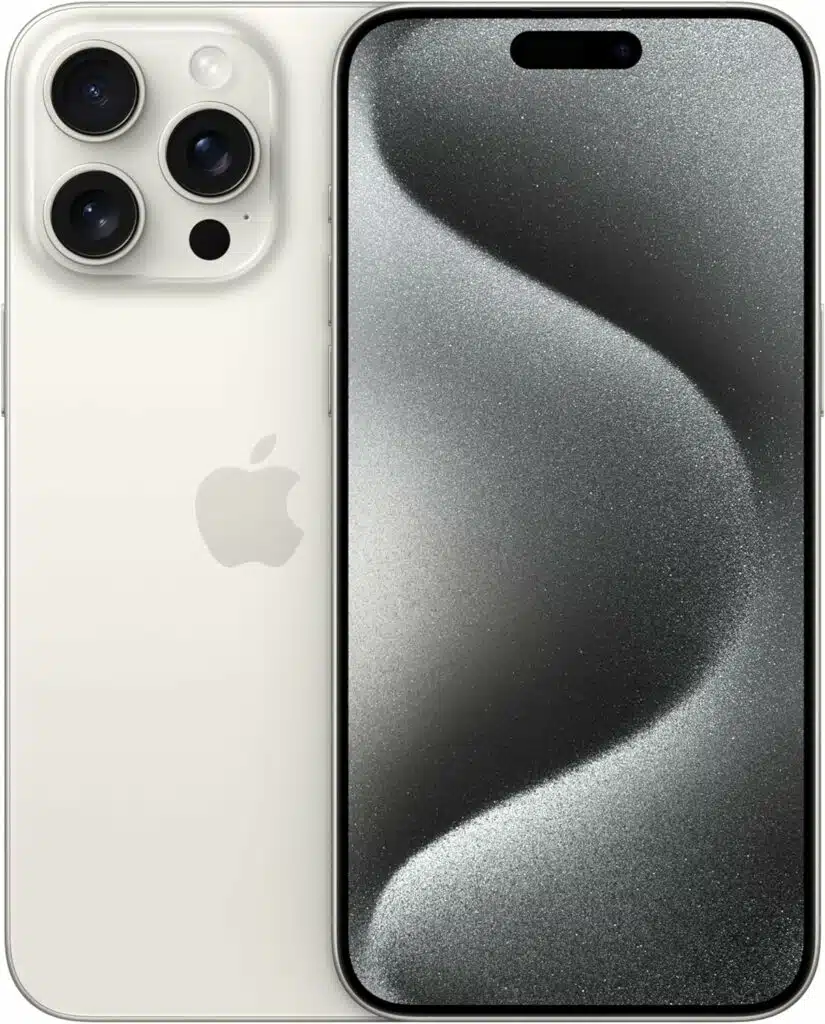
The overall best phone for architects and photography professionals
RAM: 6 GB | Storage: 256GB | Battery: 29 Hours | Screen Size: 6.7 Inches
When I held the iPhone 15 Pro Max, its aerospace-grade titanium body not only felt premium but proved resilient in various conditions. The Ceramic Shield front and matte-glass back are more than just design elements– they offer genuine protection against the elements, ideal for anyone frequently on the move.
This is why I find this phone especially suitable for professionals working on-site– such as architects, photographers, etc. Additionally, its 48MP main camera, coupled with the 5x Telephoto lens, allows me to capture moments with a level of detail and clarity that feels unparalleled. This would really come in handy for those who need to capture intricate details or landscapes.
Its 6.7” Super Retina XDR display is also nothing short of stunning. CAD visuals and renderings shine on this vibrant screen, bringing out even the minutest details. Additionally, the Always-On feature is a practical touch, letting me view essential notifications without the need to constantly engage with the device.
Performance-wise, the A17 Pro chip doesn’t hold back. Be it gaming, multitasking, or running resource-intensive applications, this phone is up to the task. Whether you run heavy design apps, photography apps, or architecture apps on it, you’re in for a smooth ride.
Though the premium price tag of the iPhone 15 Pro Max is reflective of its features, it might give some potential buyers pause. Also, while its zoom capabilities are impressive, there were times I wished for a bit more range. In my opinion, it could also use a fast charging solution.
All in all, the iPhone 15 Pro Max is a perfect choice if you are a creative professional who often finds herself or himself clicking pictures for your work. It offers a suite of features that can truly enhance one’s workflow and daily experience.
| PROS | CONS |
| ➕ Durable aerospace-grade titanium build | ➖ Comes at a premium price point |
| ➕ Pro Motion-enhanced display for lifelike visuals | ➖ Limited zoom for distant captures |
| ➕ Efficient A17 Pro chip for design software | ➖ Could benefit from faster charging |
| ➕ Advanced camera system for professional captures |
Latest Price on Amazon:
2. Samsung Galaxy S23 Ultra — Best Phone for Designers
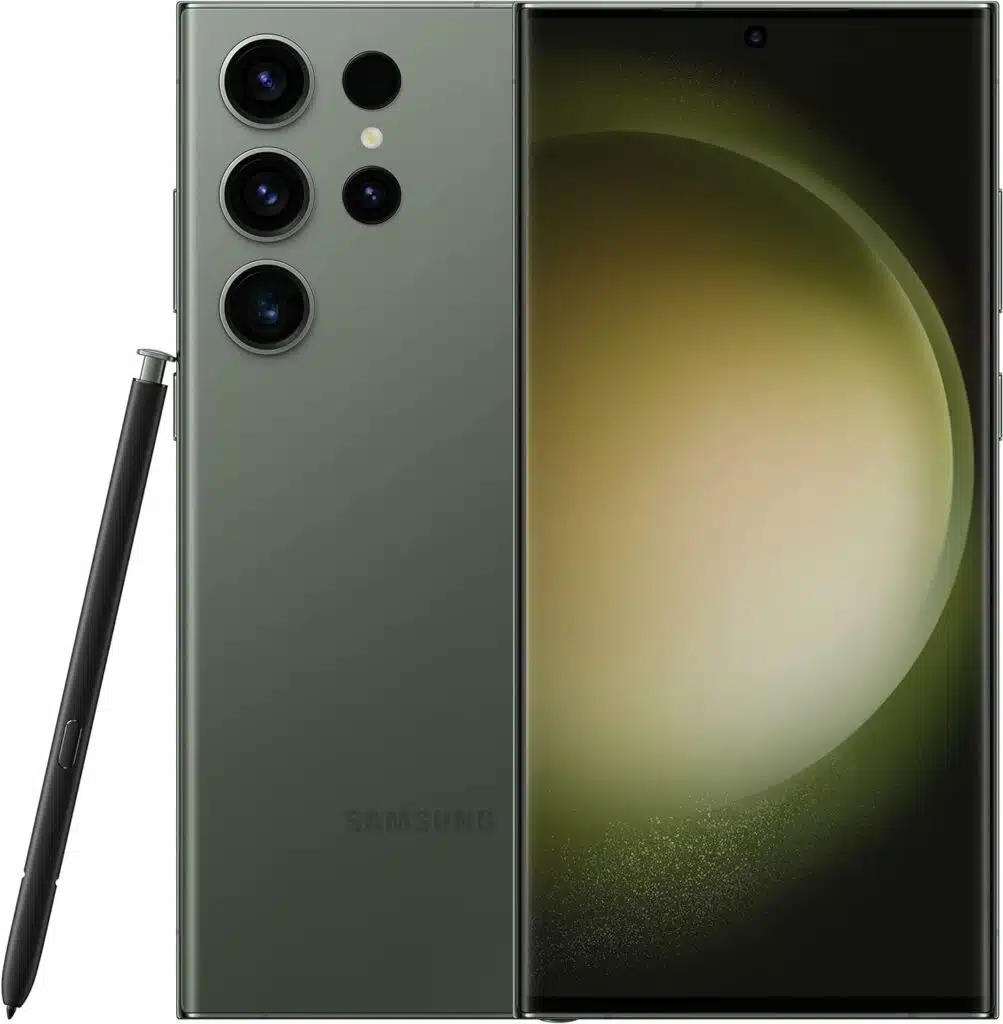
Best phone for graphic designers 2024
RAM: 12GB | Storage: 512GB | Battery: 2 Days | Screen Size: 6.8 Inches
The Samsung Galaxy S23 Ultra seriously impressed the designer in me. Its 6.8″ Dynamic AMOLED 2X Infinity-O QHD+ Edge Screen, with a 120Hz Adaptive Refresh Rate, offers vivid colors and sharp details. This enhanced color accuracy ensures consistency between design and display.
The phone’s slightly boxier design, reduced curve on display, and flatter side rails make it feel more secure in hand, especially when using the integrated S Pen. This design tweak also provides a larger surface area for sketching and writing. With an embedded fingerprint sensor, accessibility is smooth and efficient.
Underneath its sleek exterior, the Galaxy S23 Ultra is powered by the Snapdragon 8 Gen 2 For Galaxy chipset, paired with 12GB of RAM. This combination assures rapid response and efficient multitasking. The device’s 512GB storage capacity can comfortably house all your design projects and assets.
Its robust IP68 rating indicates a strong resistance to water and dust, and the phone’s enhanced connectivity options, like 5G support and DeX for Windows PC integration, add to its versatility.
The camera, boasting a 200MP resolution, captures textures and scenes with remarkable clarity. The Nightography feature really comes in handy for low-light photography, ensuring consistent quality.
As a trade-off for such high-end specs, you get a device that is bulkier than some would like. However, I was easily able to overlook this minor shortcoming due to its exceptional design and performance.
All in all, I have found the Samsung Galaxy S23 Ultra to be an excellent smartphone for design professionals. It’s powerful, fast, responsive, and spacious, with an immersive screen and a solid camera– simply everything that a designer could ask for. I just hope it was a tad lighter and came with a stylus.
| PROS | CONS |
| ➕ Crystal-clear 6.8″ AMOLED display for accurate design previews. | ➖ A significant dent in your wallet. |
| ➕ 200MP camera for sharp reference captures. | ➖ Its size and weight might not be for everyone. |
| ➕ Built-in S Pen for intricate design work. | |
| ➕ Powerful processor ensuring smooth multitasking. |
Latest Price on Amazon:
3. Samsung Galaxy Z Fold 5 — Best Phone for Drawing
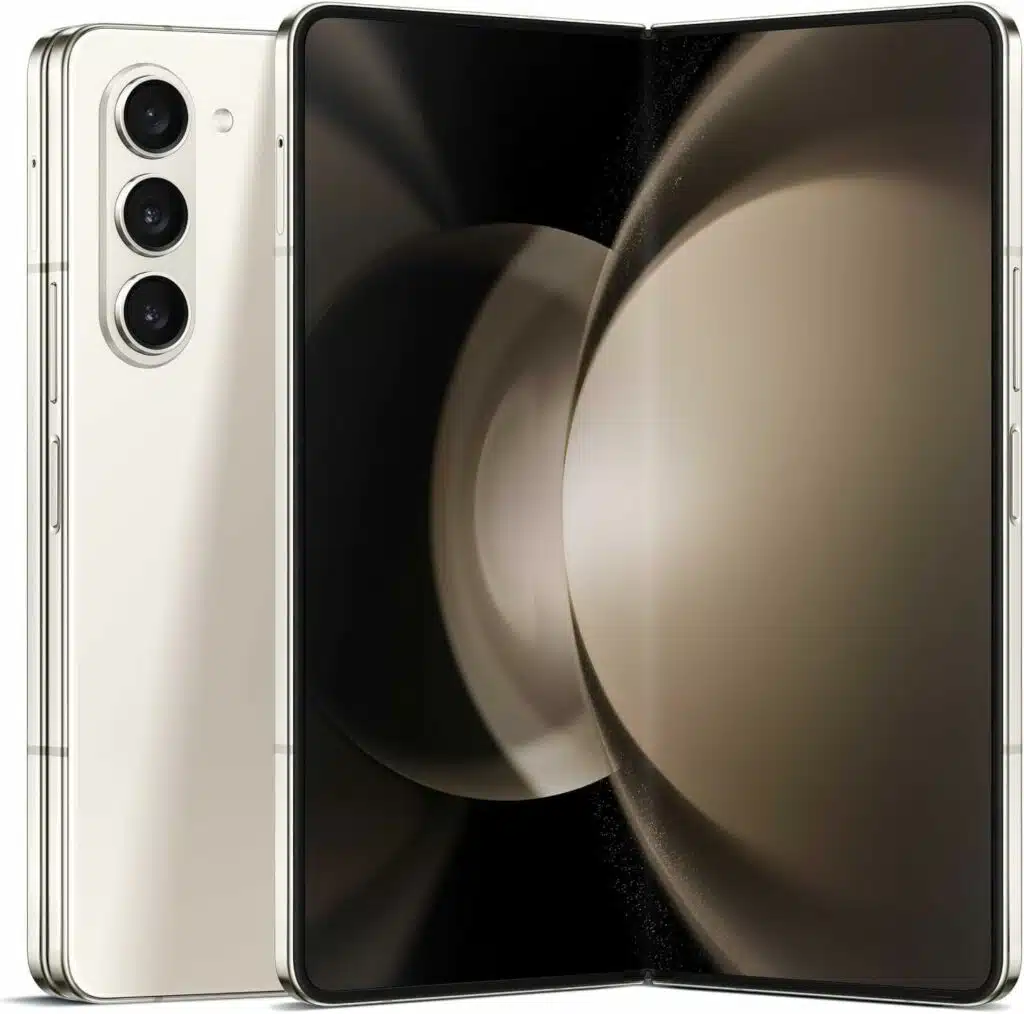
Best phone for digital art
RAM: 12GB | Storage: 512GB | Battery: 11 Hours | Screen Size: 7.6 Inches
I’ve had the chance to use the Samsung Galaxy Z Fold 5, and it’s been an incredible experience. For me, this phone stands out as the best smartphone for drawing and digital art in 2024, and here’s why.
Firstly, the 7.6-inch Dynamic AMOLED 2X interior screen is a game-changer for any artist. When I sketch or zoom into the fine details of my designs, the clarity blows me away. The screen’s 1750 nits brightness means I can even work comfortably in direct sunlight, which is super handy.
When folded, the Z Fold 5 feels a bit heavy, but as soon as I open it, the weight balances out perfectly. It’s comfortable to hold, which is important when I’m drawing for hours. The inner display is almost square, giving me a large canvas to work on. There’s a crease in the middle, but honestly, it doesn’t bother me much.
Performance-wise, this phone is a beast. The Snapdragon 8 Gen 2 chipset keeps everything running smoothly, even when I’m using demanding design apps. It never gets too hot, which is impressive. Samsung has really nailed the software for multitasking on this big screen. The drag and drop functionality and app organization are better than what I’ve seen on the Samsung Galaxy S23 Ultra.
In terms of build, the Galaxy Z Fold 5 has a newly designed hinge for better impact resistance. It’s water-resistant (IPX8), but dust can still be an issue, something Samsung might address in future models.
Camera-wise, the triple rear setup is decent. It has a 50-megapixel main camera, a 10-megapixel 3x telephoto, and a 12-megapixel ultrawide. There’s also a 4-megapixel under-display camera inside. While the cameras are good, I feel they could be a bit better, especially considering the price. But the 8K video recording is a nice touch.
A couple of downsides are the cost, which might be high for some, and the speaker placement could be improved. But for artists like me, the advantages far outweigh these issues.
In sum, the Samsung Galaxy Z Fold 5 has been my go-to mobile device for creating digital art. Its expansive screen, powerful performance, and precision of the S Pen make it unbeatable for designers in 2024.
| PROS | CONS |
| ➕ Expansive 7.6″ interior display. | ➖ Higher price point. |
| ➕ Dual-App Viewing for multitasking. | ➖ Odd speaker placement. |
| ➕ Precision of the S Pen. | |
| ➕ Durability with Gorilla Glass Victus 2 and IPX8 water resistance. |
Latest Price on Amazon:
4. Google Pixel 7 Pro — Best Value for Money Smartphone
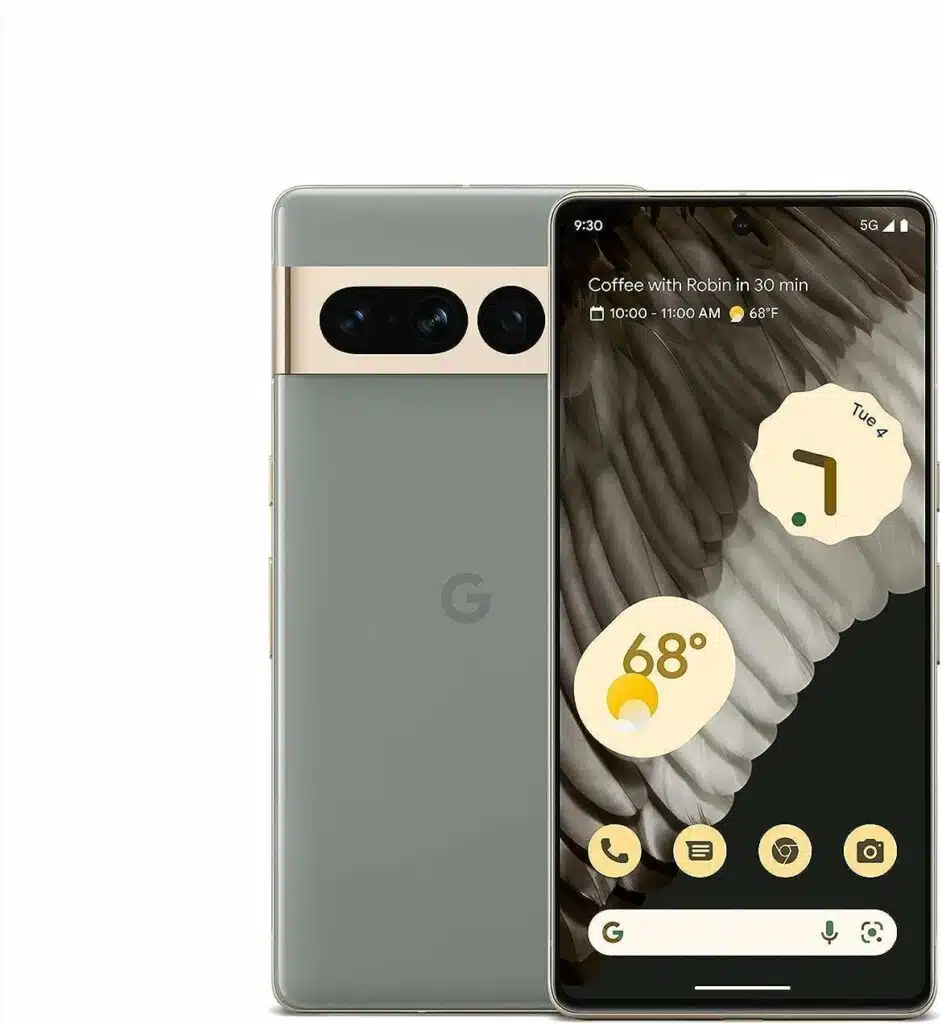
Best Android smartphone with excellent feature-price balance
RAM: 12 GB | Storage: 128GB | Battery: 24-Hour Battery | Screen Size: 6.7 Inches
As a designer who’s constantly on the move, juggling between creativity and efficiency, my experience with the Google Pixel 7 Pro has been nothing short of transformative. If you don’t have a creamy budget but you need a solid, reliable phone, this is it.
The core of this device, the Google Tensor G2, is a powerhouse that redefines what a smartphone can do. Its focus on swift operations, enhanced efficiency, and robust security aligns perfectly with my fast-paced, security-conscious lifestyle.
The integration of 5G compatibility is a game-changer. It always keeps me connected at the fastest speeds available, which is crucial for sending large design files and collaborating in real-time.
Photography is an integral part of my work, and the Google Pixel 7 Pro’s camera system is a marvel in this regard. The 5x telephoto lens, coupled with a 30x Super Res Zoom, captures intricate details effortlessly, which is vital for my texture and pattern studies.
The enhanced ultrawide lens with its Macro Focus feature further allows me to capture stunning close-ups of materials and prototypes, showcasing every minute detail with clarity.
Additionally, the 6.7-inch Smooth Display is a visual treat. As someone who deals with high-resolution graphics and videos, the quality of this display stands out.
It’s not just its size that impresses me, but also its capability to ramp up to a 120Hz refresh rate, making every scroll, swipe, and interaction fluid and responsive. This feature is particularly beneficial when I’m reviewing design mockups or conducting video calls with clients.
From a security standpoint, the Titan M2 chip, in tandem with the Tensor G2, provides a level of data protection that’s reassuring, especially when handling sensitive client information. The addition of VPN by Google One further enhances my online safety, making me feel secure while using various applications and browsing the web.
However, it’s not all perfect. The charging speed of the Google Pixel 7 Pro leaves a bit to be desired, especially during days filled with meetings and tight deadlines. The Face Unlock feature, while convenient, doesn’t quite stack up against some competitors in terms of advanced facial recognition technologies.
Still, these minor shortcomings are nothing but a trade-off for an otherwise excellent device. In sum, the Google Pixel 7 Pro is an excellent choice for those who prioritize performance, camera quality, and robust security in their smartphones. With its 6.3-inch OLED display, Google Tensor G2 processor, and a reasonable price point, it offers a great balance between performance and cost.
| PROS | CONS |
| ➕ Powerful Google Tensor G2 processor | ➖ Slower charging speeds |
| ➕ Impressive camera capabilities with Macro Focus | ➖ Basic Face Unlock feature |
| ➕ Robust security features | |
| ➕ Long-lasting battery with over 24-hour life |
Latest Price on Amazon:
5. Apple iPhone 14 — Best for Interior Designers
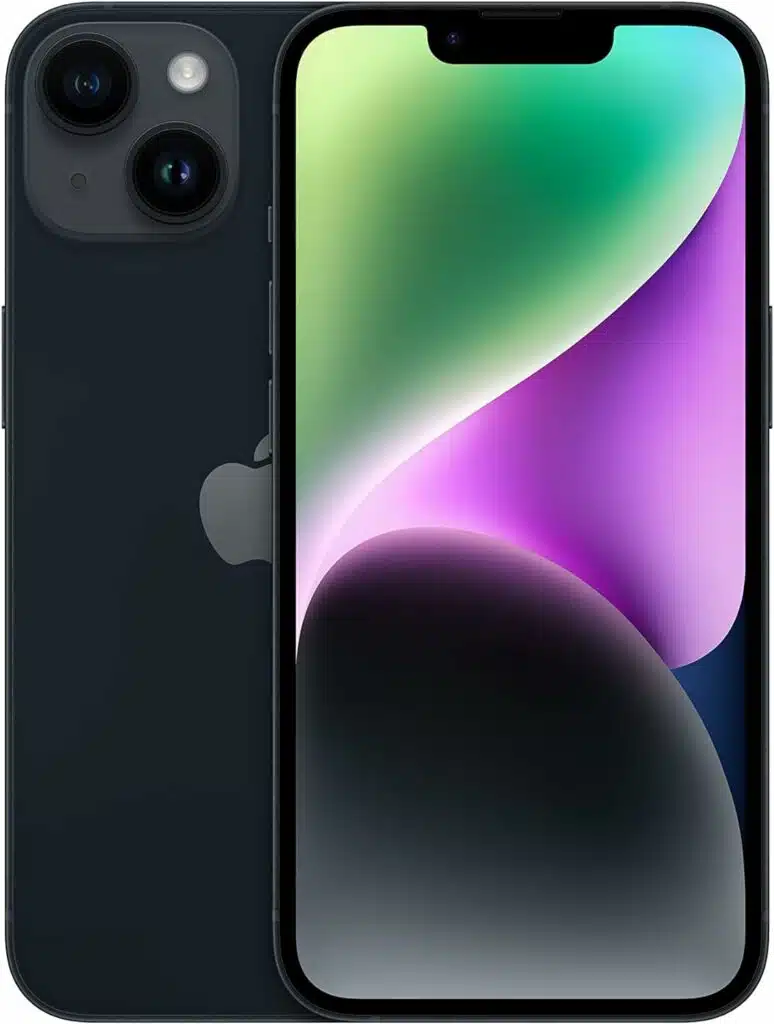
The best smart phone for interior designing
RAM: 6GB | Storage: 256GB | Battery:19 hours | Screen Size: 6.1 Inches
From camera and display quality to solid performance, long battery life, sleek body, compact design, and a lot more– the Apple iPhone 14 is everything an interior designer could ask for. Here is what I think makes it the best smartphone for interior design professionals so far in 2024:
Firstly, the A15 Bionic chip in the iPhone 14 is a powerhouse. When I sketched new designs or edited high-resolution images of interiors, this chip kept everything running smoothly. There was virtually no lag, which is crucial when working on detailed projects.
Battery life is another big plus. I’m often out, visiting sites or meeting clients, and I don’t always have time to charge my phone. The iPhone 14 would last me almost a full day, even when I used 5G to browse the web or send large files. This means less worry about running out of battery at crucial moments.
The design of the phone is both sleek and functional. It was easy to carry around, fitting comfortably in my hand or pocket, which was great when I was on the move. The absence of a traditional SIM slot took a bit of getting used to, but handling multiple eSIMs was a breeze. This feature is handy when I’m juggling between personal and professional lines.
Now, the display is where the iPhone 14 really shines for interior designers. The 6.1-inch Super Retina XDR screen of my iPhone 14 displayed colors vividly and accurately. When I chose color palettes or examined fabric textures in photos, this true-to-life color representation was invaluable.
Now, coming to its excellent camera– which is a super important feature for a creative professional like me. The 12MP main sensor took fantastic photos, especially in low-light conditions. This is essential for capturing interior spaces in various lighting. The Photonic Engine feature also subtly enhanced my shots, making them look professional with minimal effort.
“The iPhone 14 delivers fantastic-looking photos and video; the display is stellar; and you get performance that still beats the best Android phones” [Mark Spoonauer, tomsguide]
Of course, there were a few downsides. For one, the design hasn’t changed much from the iPhone 13, and the shift to exclusively using eSIMs might take some getting used to. But for interior designers, these are minor compromises compared to the benefits.
Wrapping up, for interior designers looking for a smartphone that blends functionality with high-end features, I highly recommend the iPhone 14. It’s a versatile tool that can significantly enhance your creative process. But if you’re an iPhone 13 user, it might not have a lot of upgrades to offer you.
| PROS | CONS |
| ➕ Fluid content creation with the A15 Bionic chip | ➖ Familiar design lacks novelty |
| ➕ Accurate visuals on the Super Retina XDR display | ➖ Lightning connector over USB-C |
| ➕ Versatile camera capabilities for dynamic captures | |
| ➕ Crisp 4K video recording |
Latest Price on Amazon:
6. OnePlus 11 — Best Phone for Content Creators
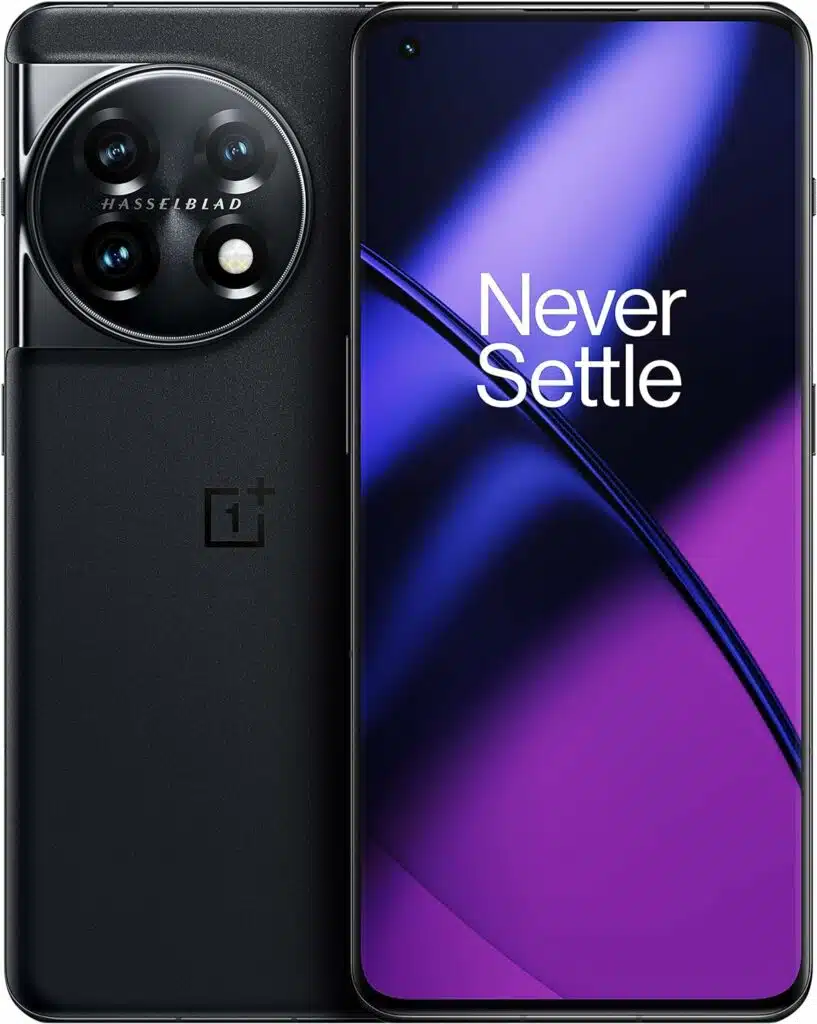
Best smartphone for content creation
RAM: 16GB | Storage: 256GB | Battery: 40 Hours | Screen Size: 6.7 Inches
Dabbling in content creation is a part of my every typical workday and having used the OnePlus 11 for one of such tasks, I’ve found it to be the best smartphone for content creators so far. And here is why:
For one, with its 6.7-inch SuperAMOLED display, supporting both Dolby Vision HDR and HDR 10 Plus, this OnePlus phone ensures crisp visuals. This display is adaptive, switching from 120Hz for demanding tasks to 1Hz for the basics, catering to varying workflow needs. The peak resolution of 3,216×1,440 pixels adds to the detailed viewing experience.
In terms of design, the OnePlus 11 looks fantastic. The shift to a circular camera design gives it a fresh, modern look. The curving glass on the front and back, paired with a metal frame, not only looks sleek but feels sturdy in hand. The stylish green shade adds a touch of elegance.
The phone’s internals are also super impressive. With the Qualcomm Snapdragon 8 Gen 2 chipset and 6GB RAM, I experienced no lag or slowdowns, whether I was streaming, using animation apps, or multitasking.
This smooth operation is essential for content creators who can’t afford any hiccups in their workflow. The Oxygen 13 OS, based on Android 13, is a bonus, promising four years of Android updates and an additional year of security updates.
For those who draw inspiration from their surroundings, like I and many content creators do, the OnePlus 11’s camera is a significant advantage. The Hasselblad-coordinated triple camera system, especially the 50MP main sensor, captures stunning images.
However, I noticed that some photos can appear a bit oversaturated due to heavy HDR processing, and the absence of a dedicated telephoto lens might be a drawback for some.
Apart from that, the 80W SUPERVOOC charging is a lifesaver. It means less time tethered to a charging point and more time being productive. However, it’s worth noting that the IP64 waterproof rating isn’t as strong as other flagships, so it’s best to be cautious around water.
Overall, the OnePlus 11 is an excellent choice for content creators in 2024. Its combination of a high-quality display, sleek design, powerful internals, advanced camera system, and fast charging makes it a versatile tool for any content creation needs.
| PROS | CONS |
| ➕ High-refresh-rate AMOLED display for clear visuals. | ➕ Camera system, though of high quality, might be outshone by some rivals. |
| ➕ Top-tier performance specs. | ➕ Waterproofing could be better in comparison to competitors. |
| ➕ Rapid 80W charging. | |
| ➕ Quality camera setup with Hasselblad enhancements. |
Latest Price on Amazon:
7. Xiaomi 13 Pro — Best Phone for Digital Marketing
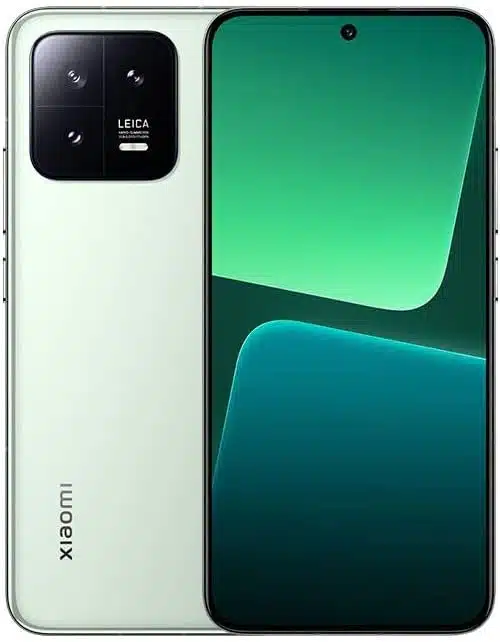
Best phone smartphone for digital and social media marketers
RAM: 12GB | Storage: 256GB | Battery: 2days | Screen Size: 6.36 Inches
From performance to battery life, durability, storage, camera, and display quality– the Xiaomi 13 Pro has everything a marketer needs on a typical work day. And I love how it seamlessly integrates style with functionality.
Starting with the display quality – I found its 6.73-inch OLED screen strikingly vivid even in direct sunlight. This is crucial for digital marketers who often work with high-quality visuals and need to review content with precision, even in direct sunlight. It also offers a 1440×3200 resolution and a 120Hz refresh rate, which makes everything from reading to streaming a visual treat.
Under the hood, the Snapdragon 8 Gen 2 processor combined with 12GB RAM makes multitasking super easy. This really comes in handy for digital marketers who frequently switch between various apps and platforms. Plus, with 256GB of storage, I never had to worry about running out of space for all my files and projects.
Connectivity is key in digital marketing, and the Xiaomi 13 Pro nails it with 5G, Bluetooth 5.3, and Wi-Fi 7 updates. This means I can always stay connected, upload content, and communicate with my team or clients without any hiccups.
The camera, co-engineered with Leica, is another reason I loved using this phone. The 50MP sensors deliver vibrant photos in a variety of lighting scenarios, perfect for creating eye-catching content for digital campaigns.
It also stands out in terms of design and durability. Weighing 229g and boasting an IP68 rating, the phone feels sturdy and durable. Plus, its 4800mAh battery lasts all day, which is crucial for a digital marketer’s long working hours. The multiple charging options are a bonus, keeping me powered up on the go. All this makes it a must-have for a professional always on the move.
Apart from that, the stereo speakers offer clear sound quality. This is something I really found useful for reviewing media content or conducting online meetings.
However, the Xiaomi 13 Pro does have a few drawbacks. For one, the ceramic back, while stylish, attracts fingerprints and needs regular cleaning. Additionally, the absence of a 3.5mm audio jack might turn off some users, and the MIUI 14, despite its features, can be less intuitive for those new to it.
But all in all, the Xiaomi 13 Pro, despite a few design and software quirks, really stands out in the premium smartphone segment. Its combination of a vivid display, powerful performance, excellent connectivity, and a high-quality camera makes it an ideal smartphone for digital marketers in 2024.
| PROS | CONS |
| ➕ Large screen for better content consumption. | ➖ Slightly unintuitive software. |
| ➕ Efficient multitasking with 12GB RAM. | ➖ Bulky rear camera module. |
| ➕ Leica-engineered camera for top-notch photography. | |
| ➕ Generous storage for academic materials. |
Latest Price on Amazon:
8. Samsung Galaxy A54 5G — Best Budget Phone
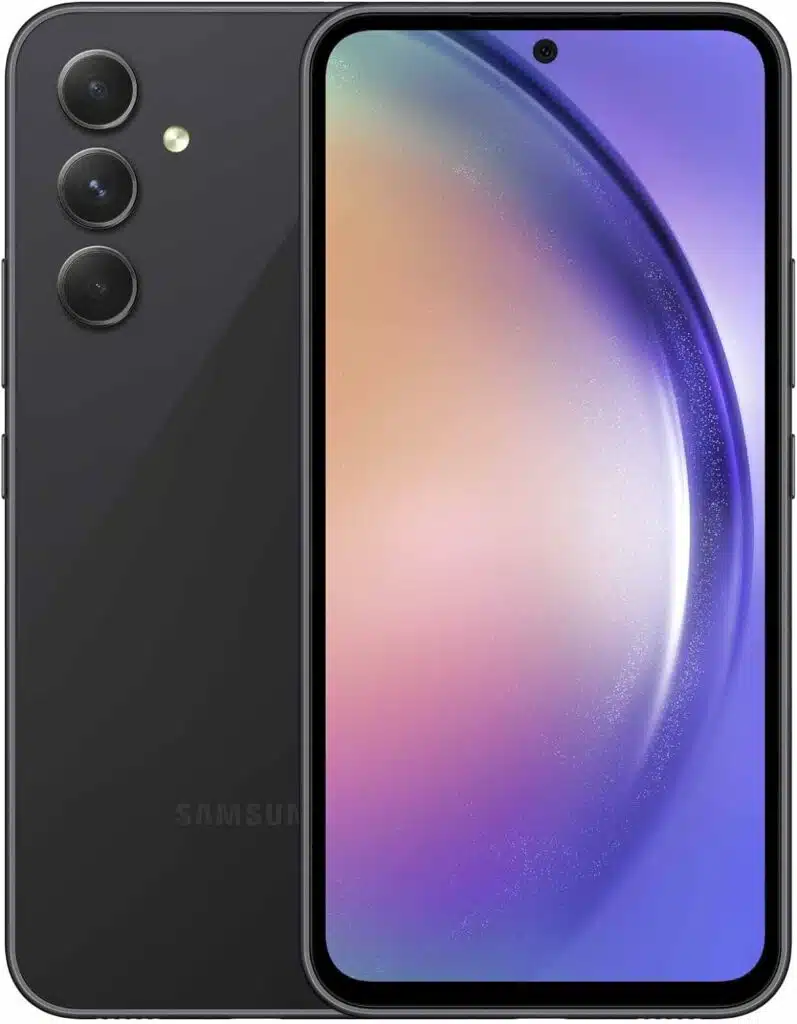
Best cheap Android phone
RAM: 6GB RAM | Storage: 128GB | Battery: 14 Hours | Screen Size: 6.4 Inches
Want a feature-packed, high-performance smartphone but don’t want to spend big? In my opinion, the Samsung Galaxy A54 5G is your best option in the current market. Let’s explore how it elevated my smartphone experience without breaking the bank.
With its 6.4-inch 1080p OLED display that can brighten up to 1000 nits, the visual experience is a step ahead, especially when you’re checking emails or making video calls on the move. The 120Hz refresh rate provides fluidity, making every scroll and swipe feel seamless.
Design-wise, it draws inspiration from the Galaxy S23 series. Those glass panels on both sides give it a premium feel, but it’s noticeably bulkier than the S23. And while the plastic frame might not scream “luxury,” the IP67 rating did give me confidence during those unexpected rain showers.
Under the hood, the Exynos 1380 chipset does its job. However, there were moments, especially during intense gaming sessions or quickly switching between apps, where I missed the power of something like the Snapdragon 8 Gen 2 found in pricier counterparts.
Apart from that, photography enthusiasts will appreciate the camera. The 50-megapixel main sensor, equipped with optical stabilization, captured some really detailed shots during my trips. The variety, with the 12-megapixel ultra-wide, 5-megapixel macro, and the 32-megapixel front camera, offered flexibility. However, don’t expect a lot from its night mode.
Battery life was one less thing to worry about. On days packed with meetings, calls, and content streaming, the phone still had juice left by bedtime. The 25W charging is a nice touch, but I did miss the convenience of wireless charging.
Wrapping it up, the Galaxy A54 5G is a solid choice for those who prioritize a balance between aesthetics, functionality, and cost. If these factors resonate with you, then this device might just fit the bill.
| PROS | CONS |
| ➕ Cost-effective with robust features. | ➖ Midrange Exynos 1380. |
| ➕ | ➖ No wireless charging, charger sold separately. |
| ➕ Enhanced security with Knox and Private Share. | ➖ Struggles with moving subjects. |
| ➕ Potential for storage expansion up to 1TB. |
Latest Price on Amazon:
9. Asus ROG Phone 7 — Best for Animation
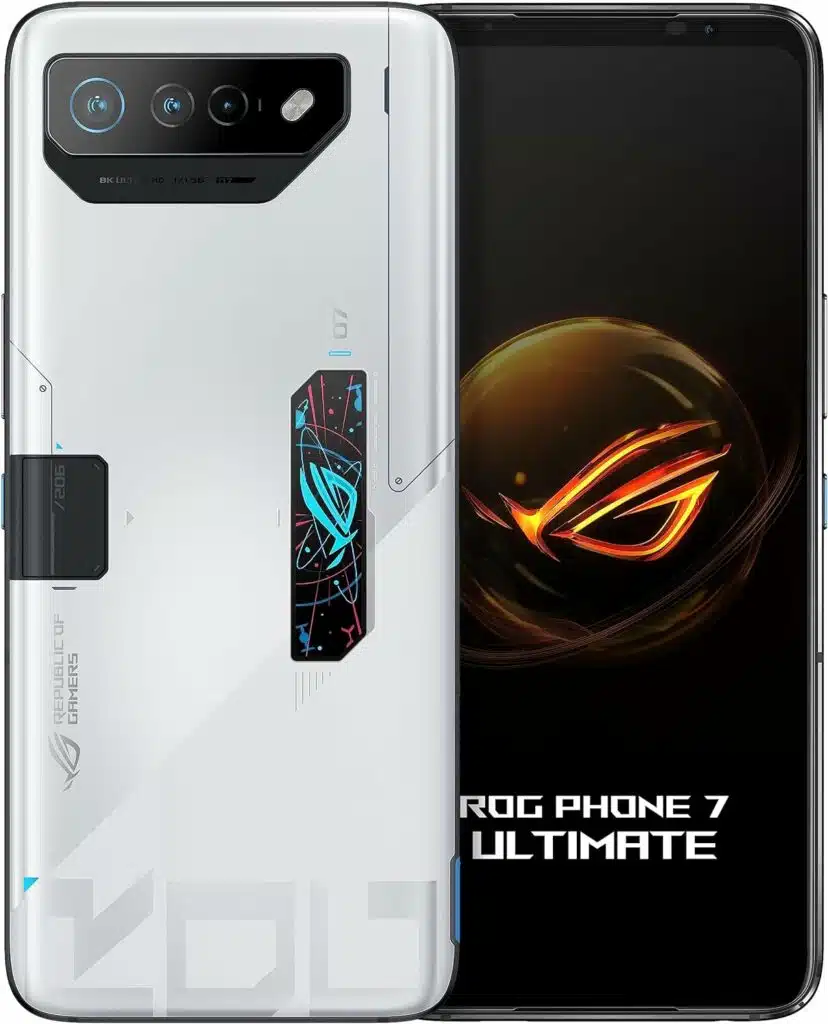
Best smartphone for animators
RAM: 16 GB | Storage: 512GB | Battery: 18 hours | Screen Size: 6.78 Inches
Based on my experience with the Asus ROG Phone 7, I can confidently say that it stands out as the best smartphone for animators in 2024. Its robust design, generous capacity, display quality, and, most importantly, impressive refresh rate make it a perfect device for animation. Let’s break it down.
The heart of the ROG Phone 7 is the Snapdragon 8 Gen 2 chip, backed by 16GB RAM and a whopping 512GB of storage. This setup handles animation software effortlessly. Whether I was rendering complex scenes or working on detailed character animations, the phone never stuttered or lagged.
Its 6.78-inch OLED display, with a 165Hz refresh rate and a 720Hz touch-sampling rate, is a dream for animators. The high refresh rate ensures that every frame of animation is smooth and fluid, a key factor when fine-tuning animations or scrubbing through timelines.
I was impressed by how cool the phone stayed, even during long animation sessions. Thanks to its innovative vapor chamber and graphite sheets, it dissipates heat effectively, preventing any thermal throttling that could hinder performance.
The 6000mAh battery, coupled with 65-watt fast charging, means you can work for extended periods without worrying about running out of juice. The Bypass Charging feature is a godsend, especially when working plugged in, as it reduces battery wear.
Although the phone is slightly heavy at 239 grams, and its gamer-centric design might not appeal to everyone, these aspects hardly matter when you’re focused on creating animations. The additional OLED display on the back and the AeroActive Cooler slot underline its high-performance nature.
While the ROG Phone 7’s camera system may not be the best in its class, and the lack of a zoom lens is noticeable, these aren’t deal-breakers for animation work. The selfie camera flipping images is a minor inconvenience.
“However, its mediocre cameras, uneven Wi-Fi performance, and divisive look may turn off anyone who isn’t focused on gaming.” [Dave LeClair, pcmag]
Initially, I encountered some glitches in the software, but subsequent updates have smoothed these out, enhancing the overall user experience.
Simply put, if you’re an animator looking for a smartphone that can handle demanding animation tasks with ease, the Asus ROG Phone 7 is definitely worth considering. It’s not just a gaming phone; it’s a powerful tool for animation, tailored to meet the specific needs of animators in 2024.
| PROS | CONS |
| ➕ Robust performance with Snapdragon 8 Gen 2 chip and 16GB RAM. | ➖ Software extras can be intrusive. |
| ➕ Outstanding 165Hz display ensures smooth gameplay. | ➖ Camera performance does not match the phone’s price point. |
| ➕ Impressive battery life with fast charging. | |
| ➕ Advanced cooling system with GameCool 7 Technology. |
Latest Price on Amazon:
10. Motorola Razr — Best Phone Design
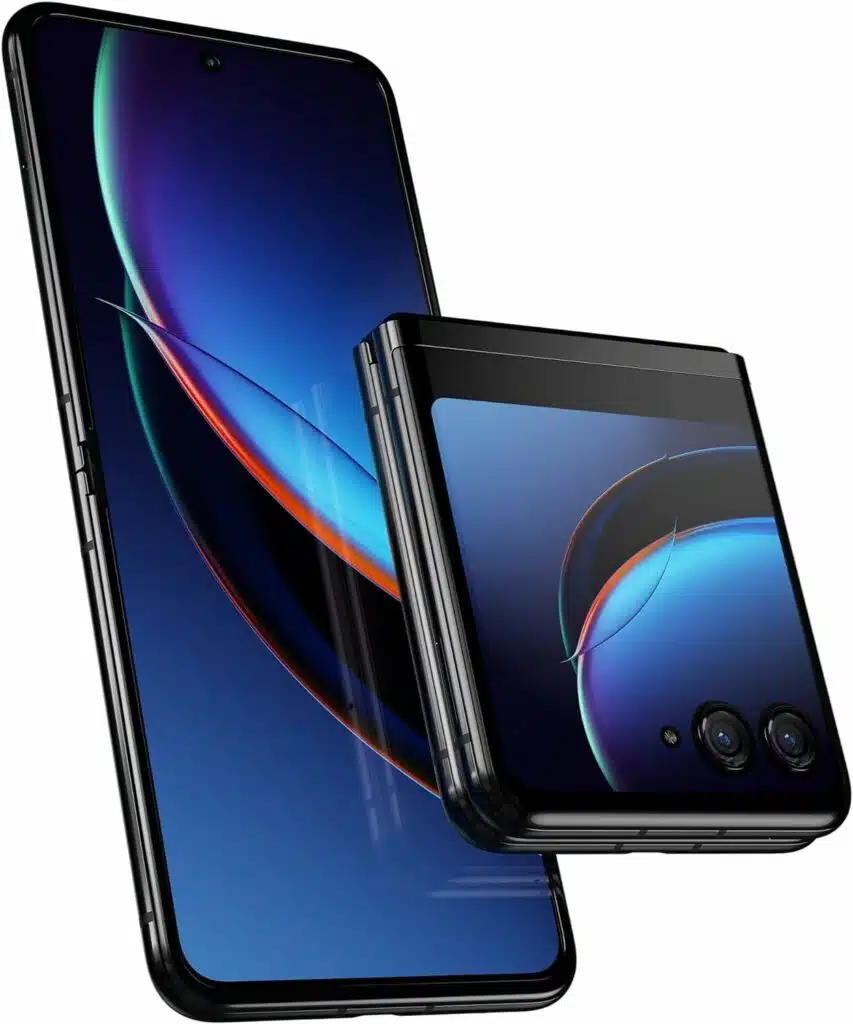
Best of the cool looking phones
RAM: 8 GB | Storage: 256 GB | Battery: 1 Day | Screen Size: 6.9 Inches
The Motorola Razr is an impressive blend of style and functionality, perfect for those with a creative mind. The external display allows quick access to designs or sketches without having to open the phone. And when you do, the 6.9″ pOLED screen doesn’t disappoint, showcasing designs with clarity.
The external camera setup includes a 12MP main and a 13MP ultrawide lens, providing clear and detailed shots. Video capabilities are also commendable, with 4K at 60fps on the main and 4K at 30fps on the ultrawide. The inner 32MP camera, though defaulting to 8MP output, produces decent images.
Sound-wise, the stereo setup utilizes both a down-firing speaker and the earpiece, producing clear audio. However, the absence of a USB-C-to-3.5mm adapter in the box could be a drawback for some. Apart from that, Bluetooth 5.3 ensures stable connections, while NFC integration facilitates easy tap-to-pay transactions. Overall – a recipe for convenience and innovation.
I was also impressed by the fingerprint scanner’s responsiveness, regardless of its position. The inclusion of Android’s one-handed mode gesture and Gboard’s one-handed typing further aids in usability, especially on-the-go.
Additionally, with the Snapdragon 8+ processor at its core, the phone handles even demanding apps efficiently. The battery is quite reliable, and the TurboPower 30W charging comes in handy during long workdays.
In terms of design, tactile buttons, the refined hinge mechanism, and the balance between the external and main screens make for an intuitive experience. The Flex View, though innovative, might require an adjustment period for some.
To sum up, the Motorola Razr strikes a balance between aesthetic appeal and function. Other than its unique design, its overall features and performance make it a compelling choice for a variety of creative professionals.
| PROS | CONS |
| ➕ Instant access with the unparalleled external display. | ➖ Limited Android updates. |
| ➕ Vibrant 6.9″ pOLED screen for detailed visuals. | ➖ Potential limitations with Flex View. |
| ➕ Versatile camera options for quality imaging. | ➖ Front screen tends to smudge. |
| ➕ Robust processor tailored for intensive design apps. |
Latest Price on Amazon:
How I Selected and Tested the Best Smartphones for Graphic Designers, Artists, and Architects
Selection Process
To find the right smartphones suited for these niche professions, I implemented a thorough and systematic approach. Here’s the path I charted:
Step 1: Requirement Analysis: Drawing from my familiarity with the fields of graphic design, art, and architecture, I identified the specific needs and challenges when utilizing smartphones for activities such as graphic design, 3D visualizations, animations, and gaming.
Step 2: Exhaustive Market Survey: Based on my understanding, I delved deep into the market to spot top-tier and high-performance smartphones. My approach involved scrutinizing user feedback, browsing specialized forums, and assessing relevant publications to put together an initial list of potential candidates.
Step 3: Technical Specifications: With the preliminary list ready, I analyzed the technical attributes of each device. Aspects like screen clarity, color fidelity, processing capabilities, RAM, storage space, and GPU performance were under the microscope. Special emphasis was placed on features pivotal for graphic design, art, 3D visualization, and animation.
Step 4: Refinement: Guided by the detailed analysis, I refined the list, sidelining devices that didn’t cater to the high demands of the disciplines in focus.
Testing Process
A curated list demands rigorous evaluation. Here’s how I tested the potential contenders:
Step 1: Practical Application Testing: I employed each shortlisted smartphone in real-world scenarios. Activities included drawing detailed designs, conceptualizing 3D architectural prototypes, crafting animations, and even gaming. This hands-on approach ensured that each device was up to the mark, fulfilling both professional and recreational needs.
Step 2: Performance Metrics: To further gauge their capabilities, I subjected each smartphone to benchmarking tests. These evaluations provided a clearer picture of their graphic processing strengths, multitasking efficiencies, and general responsiveness.
Step 3: User Experience (UX) Assessment: Beyond mere technical prowess, the overall user experience is pivotal. Thus, I dissected the UX for each device, examining attributes like touch screen sensitivity, stylus integration (if relevant), and software interface ease.
Step 4: Analyzing Outcomes: Post-testing, I collated my observations, pinpointing any persistent challenges or standout features.
Step 5: Conclusive Evaluation and Categorization: Combining insights from my hands-on trials, benchmark outcomes, and UX reviews, I completed my assessments. I then ranked each smartphone based on its aptitude for graphic design, art, 3D visualizations, animations, and gaming.
The Ultimate Buying Guide: Best Smartphones for Graphic Designers, Artists, and Architects
Selecting the right smartphones can be overwhelming, especially when your professional tasks like graphic designing, art, 3D rendering, animation, and even gaming demand a device that’s not just ‘good’ but stellar. Dive deep into this buying guide to find the best smartphone for your professional needs.
🎨 Display and Color Accuracy
Your artwork deserves to be viewed in its full glory. Seek smartphones with:
- High-resolution displays: Think Quad HD or even 4K.
- OLED or AMOLED panels: Phones with these panels, like the Samsung Galaxy S23 Ultra offer richer blacks and more vibrant colors.
- Natural color calibration: This ensures your designs and artworks appear as intended.
🚀 Performance Powerhouse
Whether you’re rendering intricate 3D models or sketching your next masterpiece, lag is the enemy:
- Processor: Look for top-tier chipsets, like the latest from Qualcomm, Apple, or Samsung like the OnePlus 11 has Qualcomm Snapdragon 8 Gen 2 chipset.
- RAM: 6GB should be your minimum, but 8GB or more will offer a smoother experience.
- GPU: Essential for animation and gaming. Prioritize phones with robust graphics chips.
✍️ Stylus Support
A phone with a stylus like the Samsung Galaxy S23 Ultra can elevate your precision and creativity:
- Pressure Sensitivity: The more levels, the better. This allows for intricate shading and detailing.
- Palm Rejection: Because nothing’s more annoying than unintended marks.
- Integration: Some smartphones have dedicated slots for stylus storage and charging.
📁 Storage and Expandability
Your projects can eat up space, fast:
- Base Storage: Aim for at least 128GB. If you handle video or 3D projects, consider 256GB or more as in the iPhone 15 Pro.
- Expandability: A microSD card slot can be a lifesaver, offering flexibility and additional space.
🔋 Battery Life
You’re on the move, and your phone should keep pace:
- Battery Capacity: Look for 4,000mAh or higher as in the Samsung Galaxy A54 5G. But remember, screen resolution and usage can influence battery drain.
- Fast Charging: When you’re in a rush, this feature can be a lifesaver.
- Wireless Charging: Not a must-have, but a delightful convenience for many.
🔄 Software and Updates
A phone’s software can make or break your experience:
- Latest OS: Ensure the smartphone runs the latest version for security and feature benefits like the Google Pixel 7.
- Software Skin: Some manufacturers tweak Android. Test these out in-store or via reviews to see if they mesh with your workflow.
- Update Commitment: Brands that promise regular updates help future-proof your device.
📐 Design and Durability
As an architect or designer, aesthetics might matter to you:
- Build Quality: Metal and glass exude premium vibes, but ensure they’re durable.
- Water and Dust Resistance: Accidents happen. IP ratings (like IP68) provide peace of mind. The Samsung Galaxy Z Fold 5 offers an IPX8 water resistance.
- Weight and Size: Balance is key. Ensure the device feels comfortable, especially during prolonged use.
🎮 Gaming-Ready Features
For the downtime or if gaming is part of your job:
- High Refresh Rate: A 90 Hz or 120 Hz screen ensures smoother graphics and gameplay.
- Cooling Systems: Some phones boast vapor chambers or fans to keep thermals in check like the Asus ROG Phone 7.
- Gaming Modes: These optimize performance and block interruptions.
Frequently Asked Questions
Whether iPhone or Android is "better" largely depends on individual preferences. Both have their merits. iPhone (iOS) offers a consistent user experience, regular updates, stringent app quality checks, and tight integration with Apple's ecosystem. Android provides a broader range of devices, greater customization options, varied hardware features, and flexibility for developers. Right now, the Samsung Galaxy S23 Ultra is the top Android phone on the market. It shines with its speedy chip and bright AMOLED screen. Plus, it has something special that many other phones miss: a stylus. On the other hand, for those seeking a simple and pure experience, the Google Pixel 7 Pro is the best choice. The most popular phone brand in the world is Apple. Apple overtook Samsung, capturing 23% of the global smartphone market share, largely due to the recent launch of the iPhone 14 series. In comparison, Samsung had a market share of 19%. However, it's worth noting that overall global smartphone shipments in 2022 saw a decline of 12%, dropping to 1.2 billion units—this was the lowest recorded since 2013.Is the iPhone better than Android?
What is the fastest smartphone 2024?
What is the most popular phone in the world?
Final Thoughts
Choosing the right phone for work can be tricky, especially when there are so many options out there. But for me, the Google Pixel 7 stands out from the rest. It is quick, captures detailed photos, and displays everything crisply. While it could improve in charging speed and facial recognition, its benefits outweigh the drawbacks– especially considering its appealing price to cost ratio.
But if the price is no bar or you’re a loyal iPhone user, you can’t go wrong with the iPhone 15 Pro Max– which excels in all: performance, speed, display quality, camera, and more. Plus, it integrates well into your Apple ecosystem.
So, which smartphone are you leaning to buy? I’d love to hear in the comments below.
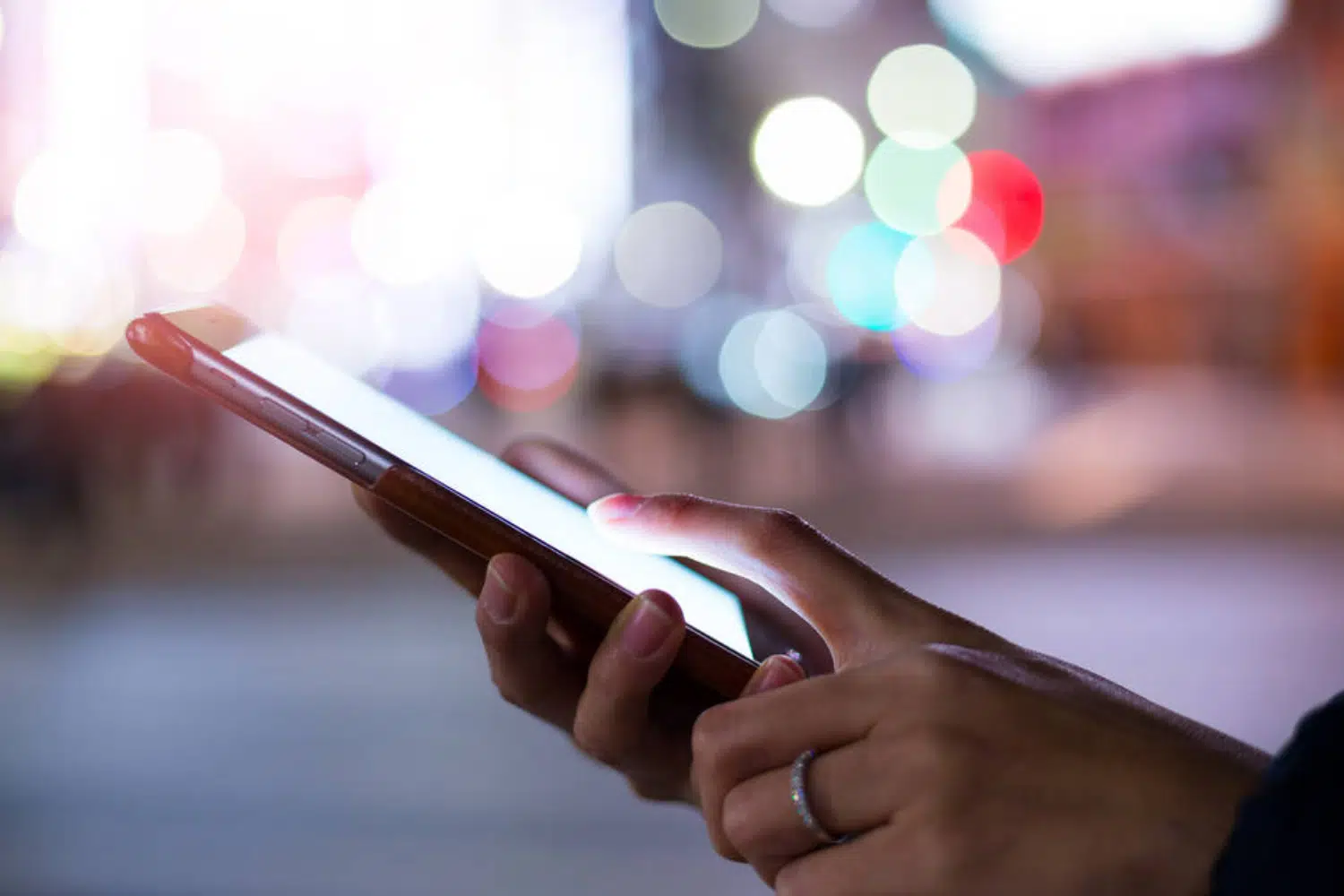
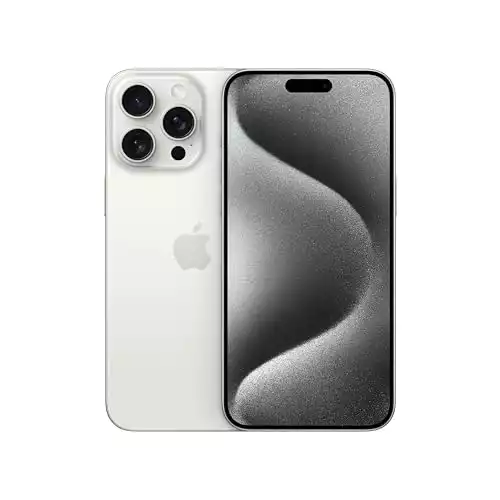
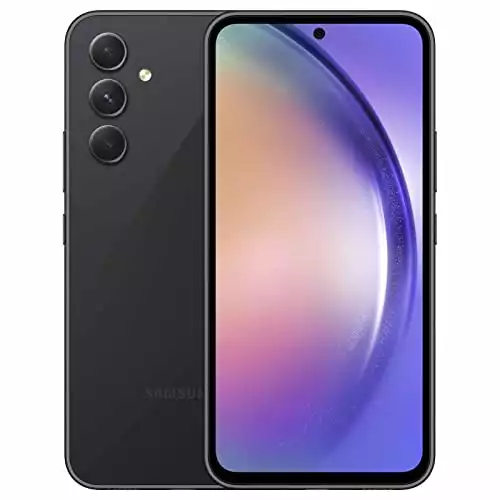
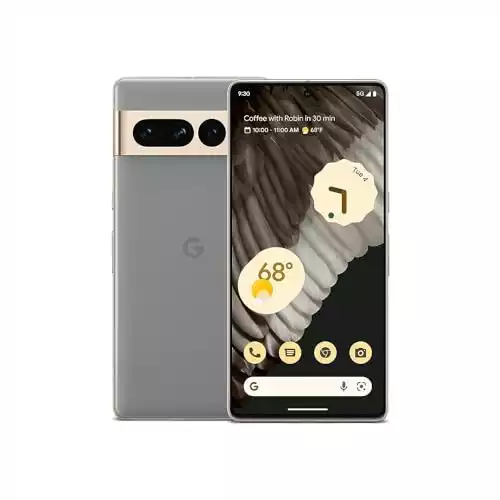
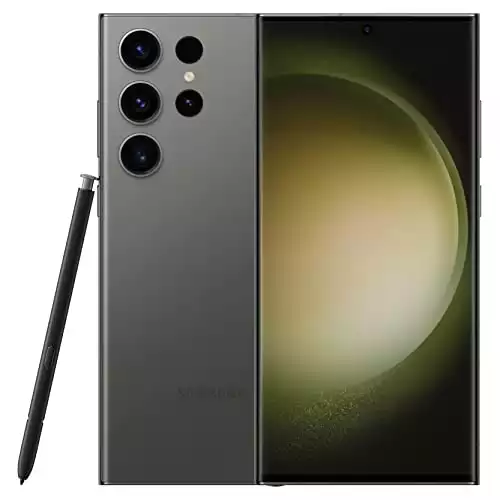
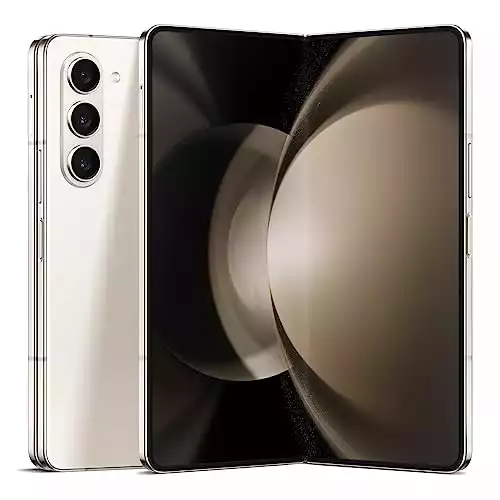

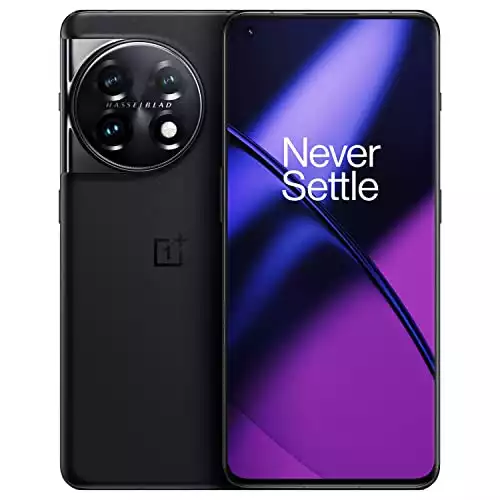
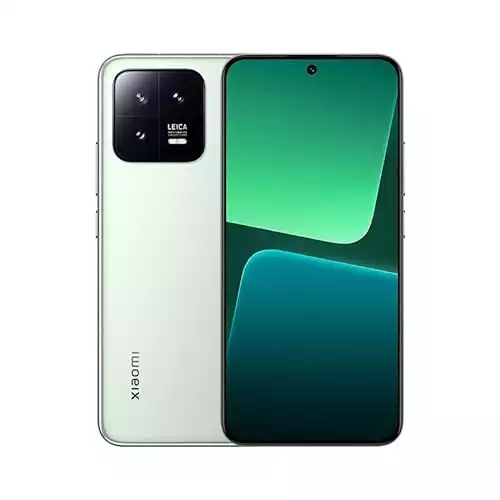
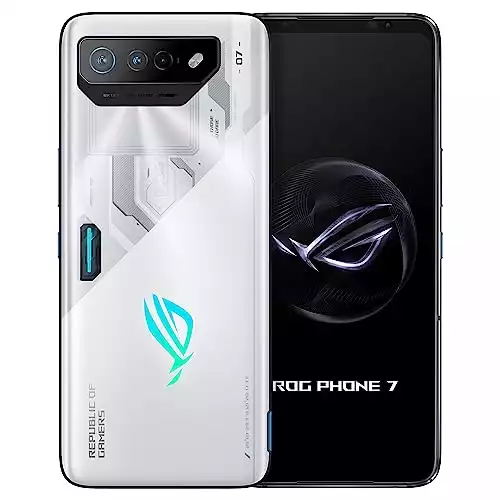
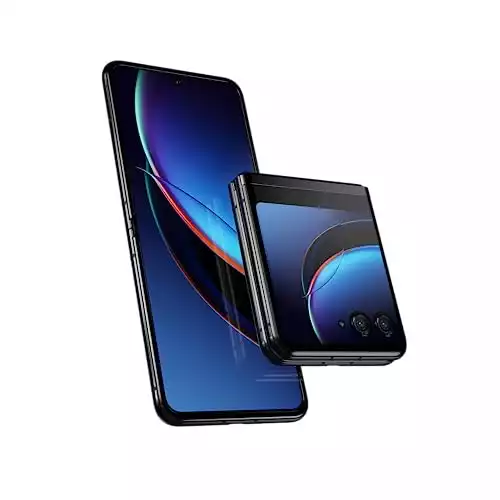

i must say these tips about mobile phones are quite handy and i appreciate you for sharing it with us..thankyou ..keep sharing.